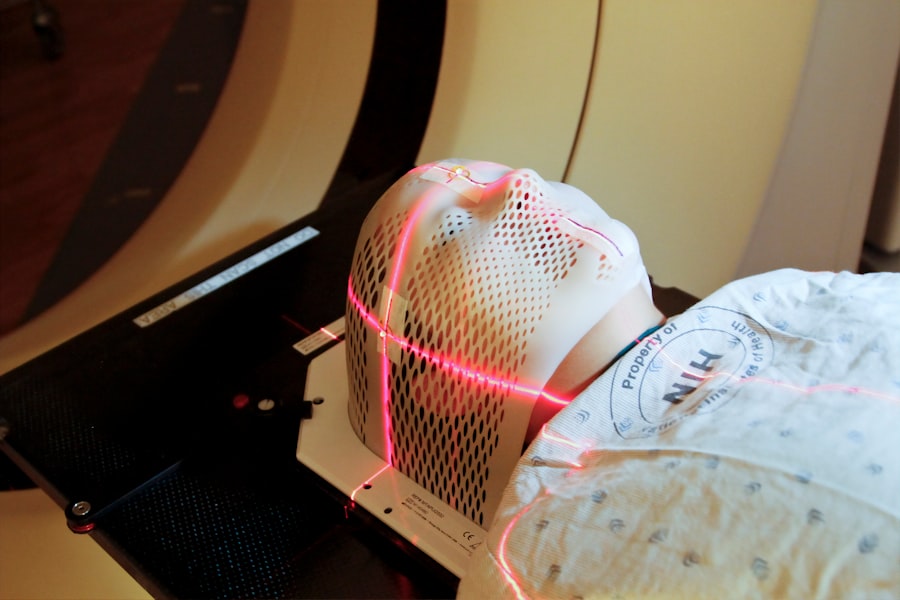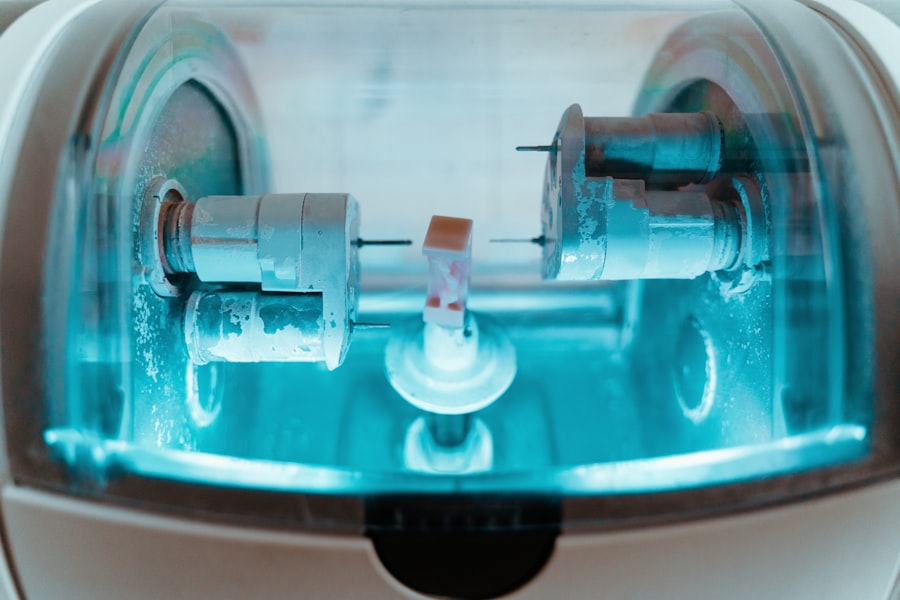When it comes to laser hair removal, many individuals often focus on the initial treatments and overlook the significance of maintenance sessions. These follow-up appointments are crucial for ensuring that the results you’ve achieved remain effective over time. After your initial series of treatments, which typically consist of several sessions spaced a few weeks apart, maintenance sessions help to target any remaining hair follicles that may not have been fully treated.
This is particularly important because hair grows in cycles, and not all hair is in the same growth phase at the same time. By scheduling regular maintenance, you can effectively manage any regrowth and maintain smooth, hair-free skin. Moreover, maintenance sessions can also enhance the longevity of your results.
Over time, some hair follicles may become active again due to hormonal changes or other factors. Regularly scheduled maintenance allows your technician to address these issues promptly, ensuring that your skin remains as smooth as possible. This proactive approach not only saves you from potential frustration but also reinforces the investment you’ve made in your laser hair removal journey.
By understanding the importance of these sessions, you can better appreciate their role in achieving and maintaining your desired aesthetic.
Key Takeaways
- Regular maintenance sessions are important for long-term results in laser hair removal
- Prepare for your maintenance session by avoiding sun exposure and shaving the treatment area
- During your maintenance session, expect a quick and efficient treatment process
- After your maintenance session, follow post-treatment care tips to ensure optimal results
- Manage potential side effects such as redness or irritation with the guidance of your clinic’s professionals
Preparing for Your Laser Hair Removal Maintenance Session
Preparation is key when it comes to maximizing the effectiveness of your laser hair removal maintenance session. Before your appointment, it’s essential to avoid sun exposure for at least two weeks. Tanning, whether from the sun or tanning beds, can increase the risk of complications during treatment and may affect the efficacy of the laser.
If you have recently tanned, it’s advisable to reschedule your session until your skin has returned to its natural tone. Additionally, you should refrain from waxing or plucking hair in the area being treated for at least four weeks prior to your appointment. This is because the laser targets the pigment in the hair follicle, and having hair present is crucial for optimal results.
Another important aspect of preparation is to ensure that your skin is clean and free from any products on the day of your session. This means avoiding lotions, creams, or deodorants that could interfere with the laser’s effectiveness. You might also want to wear loose-fitting clothing to your appointment to avoid any irritation post-treatment.
If you have any concerns or questions about your specific situation, don’t hesitate to reach out to your clinic beforehand. They can provide tailored advice to help you prepare adequately and ensure that you get the most out of your maintenance session.
What to Expect During Your Maintenance Session

As you arrive for your maintenance session, you may feel a mix of anticipation and curiosity about what lies ahead. The process typically begins with a consultation where your technician will assess your progress since your last treatment. They will examine the areas being treated and discuss any changes you may have noticed.
This is a great opportunity for you to voice any concerns or ask questions about the procedure or results. Once everything is set, you’ll be guided to a treatment room where the actual laser hair removal will take place. During the session itself, you can expect a similar experience to your initial treatments.
The technician will apply a cooling gel to protect your skin and enhance comfort during the procedure. As the laser is applied, you may feel a sensation akin to a rubber band snapping against your skin; however, many modern lasers come equipped with cooling mechanisms that help minimize discomfort. The duration of the session will depend on the size of the area being treated but generally lasts anywhere from a few minutes to an hour.
Afterward, you’ll be given post-treatment instructions and may even receive soothing ointments or creams to apply at home.
Post-Treatment Care and Aftercare Tips
| Aftercare Tips | Frequency |
|---|---|
| Attend follow-up appointments | Weekly |
| Take prescribed medications | Daily |
| Engage in therapy sessions | Bi-weekly |
| Practice self-care activities | Daily |
| Stay connected with support network | Regularly |
After your maintenance session, taking care of your skin is essential for optimal healing and results. Initially, you may notice some redness or swelling in the treated area; this is completely normal and should subside within a few hours to a couple of days. To soothe any discomfort, applying a cold compress can be beneficial.
It’s also advisable to avoid hot showers, saunas, or intense workouts for at least 24 hours post-treatment, as these can exacerbate irritation. In addition to immediate care, long-term aftercare plays a significant role in maintaining your results. Keeping the treated area moisturized can help prevent dryness and irritation.
You should also continue to avoid sun exposure and use sunscreen with a high SPF on the treated areas when going outdoors. This will protect your skin from UV damage and help maintain its appearance. If you notice any unusual side effects or prolonged discomfort, don’t hesitate to contact your clinic for guidance.
Managing Any Potential Side Effects
While laser hair removal is generally safe and effective, it’s important to be aware of potential side effects that may arise after your maintenance session. Common side effects include redness, swelling, and mild discomfort in the treated area. These symptoms usually resolve on their own within a few days; however, if they persist or worsen, it’s crucial to seek professional advice.
In rare cases, more serious side effects such as blistering or changes in skin pigmentation can occur, particularly if proper aftercare isn’t followed. To manage these potential side effects effectively, it’s essential to adhere closely to post-treatment care instructions provided by your technician. If you experience discomfort beyond what was expected, over-the-counter pain relievers can help alleviate symptoms.
Additionally, applying aloe vera gel or other soothing products can provide relief and promote healing. Always keep an open line of communication with your clinic; they are there to support you through any concerns that may arise during your recovery process.
Long-Term Benefits of Regular Maintenance Sessions

Investing in regular maintenance sessions for laser hair removal offers numerous long-term benefits that extend beyond just immediate results. One of the most significant advantages is the reduction in hair regrowth over time. With each maintenance session, you’re effectively targeting any dormant hair follicles that may have become active again since your last treatment.
This means that over time, you’ll likely notice fewer hairs returning and a smoother overall appearance. Additionally, regular maintenance can lead to improved skin texture and tone in the treated areas. The laser not only removes unwanted hair but can also stimulate collagen production in the skin, leading to a more youthful appearance over time.
Many individuals report feeling more confident and satisfied with their appearance after committing to regular maintenance sessions. This boost in self-esteem can positively impact various aspects of life, from personal relationships to professional opportunities.
Addressing Common Misconceptions about Laser Hair Removal Maintenance
Despite its growing popularity, there are still several misconceptions surrounding laser hair removal maintenance that can lead to confusion or hesitation among potential clients. One common myth is that once you complete your initial series of treatments, no further sessions are necessary. While it’s true that many individuals experience significant hair reduction after their initial treatments, hormonal changes or other factors can lead to occasional regrowth that requires attention through maintenance sessions.
Another misconception is that maintenance sessions are painful or uncomfortable. In reality, advancements in laser technology have made these sessions much more comfortable than they were in the past.
Understanding these misconceptions can help alleviate any fears you may have about committing to regular maintenance sessions and encourage you to embrace this effective method of hair removal.
Finding the Right Clinic for Your Maintenance Sessions
Choosing the right clinic for your laser hair removal maintenance sessions is crucial for ensuring a positive experience and optimal results. Start by researching clinics in your area and reading reviews from previous clients. Look for establishments that prioritize safety and have certified technicians with extensive experience in laser hair removal procedures.
A reputable clinic will also offer consultations where you can ask questions and discuss your specific needs before committing to treatment. During your consultation, pay attention to how comfortable you feel with the staff and their willingness to address your concerns. A good clinic will take the time to explain the process thoroughly and provide personalized recommendations based on your skin type and hair growth patterns.
Additionally, inquire about their technology; clinics using advanced lasers tend to offer more effective treatments with fewer side effects. By taking these steps, you can find a clinic that aligns with your expectations and supports you throughout your laser hair removal journey. In conclusion, understanding the importance of maintenance sessions in laser hair removal is essential for achieving long-lasting results.
By preparing adequately for each session, knowing what to expect during treatment, and following proper aftercare guidelines, you can maximize the benefits of this effective hair removal method while addressing any potential side effects along the way. With regular maintenance sessions, you’ll not only enjoy smoother skin but also gain confidence in your appearance for years to come.
If you’re considering a laser hair removal maintenance session, you may also be interested in learning more about the latest fashion trends. Check out this article on com/fashion-home-4/’>fashion trends to stay up to date on the latest styles and looks.
Keeping your skin smooth and hair-free with laser hair removal can complement your fashion choices and help you feel confident in your appearance.
FAQs
What is a laser hair removal maintenance session?
A laser hair removal maintenance session is a follow-up treatment that is done after completing a full course of laser hair removal. It is designed to target any remaining hair growth and ensure long-term hair reduction.
How often should I have a laser hair removal maintenance session?
The frequency of laser hair removal maintenance sessions can vary depending on individual hair growth patterns and the specific laser technology used. Typically, maintenance sessions are recommended every 6-12 months.
What are the benefits of laser hair removal maintenance sessions?
Laser hair removal maintenance sessions help to prolong the results of the initial treatment by targeting any new hair growth. They can also help to maintain smooth, hair-free skin over the long term.
Are laser hair removal maintenance sessions painful?
While some individuals may experience mild discomfort during a laser hair removal maintenance session, the procedure is generally well-tolerated. The sensation is often described as a slight stinging or snapping feeling.
Can I undergo laser hair removal maintenance sessions on any part of my body?
Laser hair removal maintenance sessions can be performed on various parts of the body, including the face, legs, arms, underarms, bikini area, and more. However, it is important to consult with a qualified practitioner to determine the suitability for specific areas.





